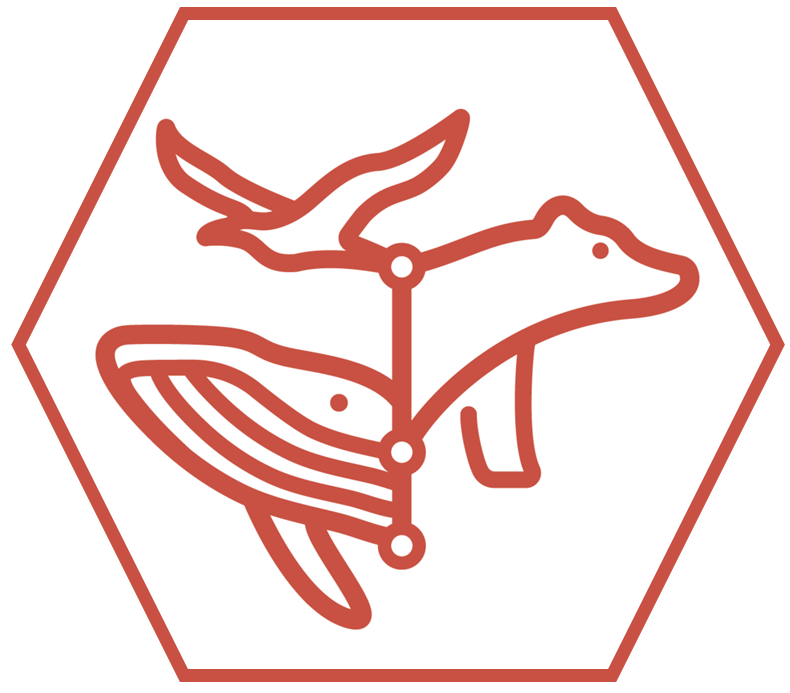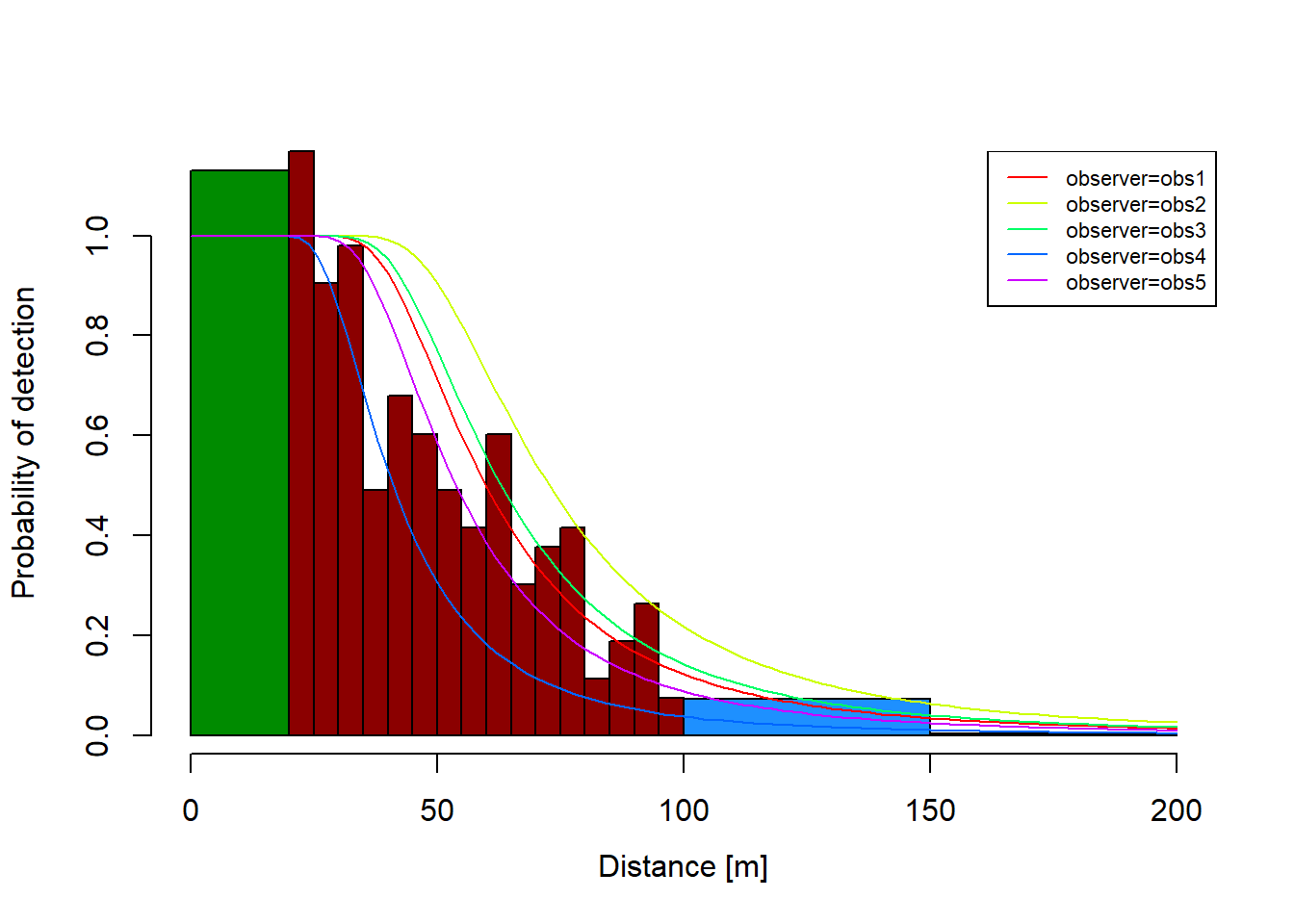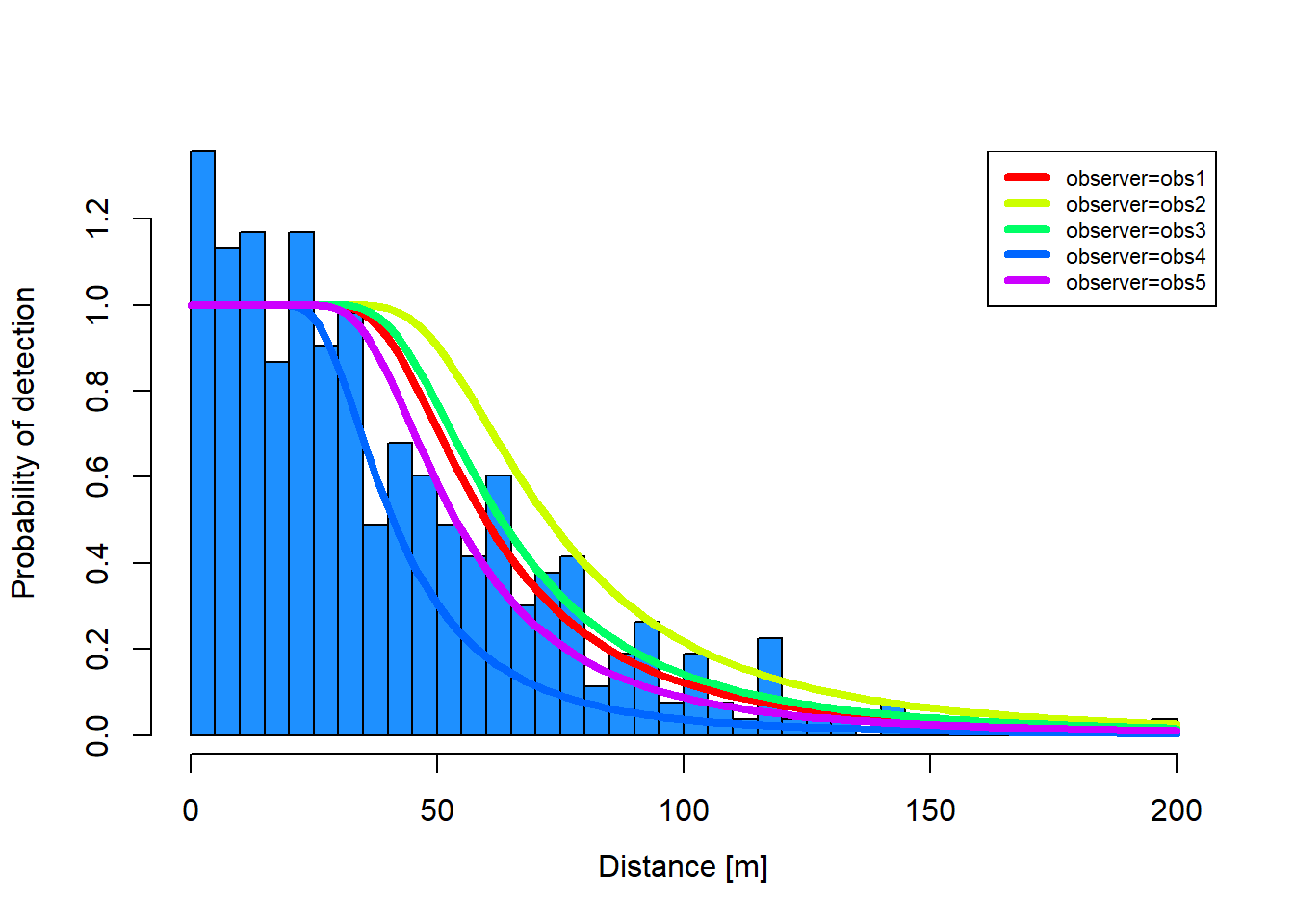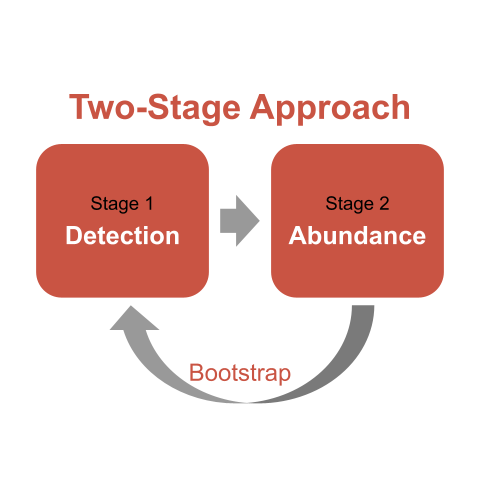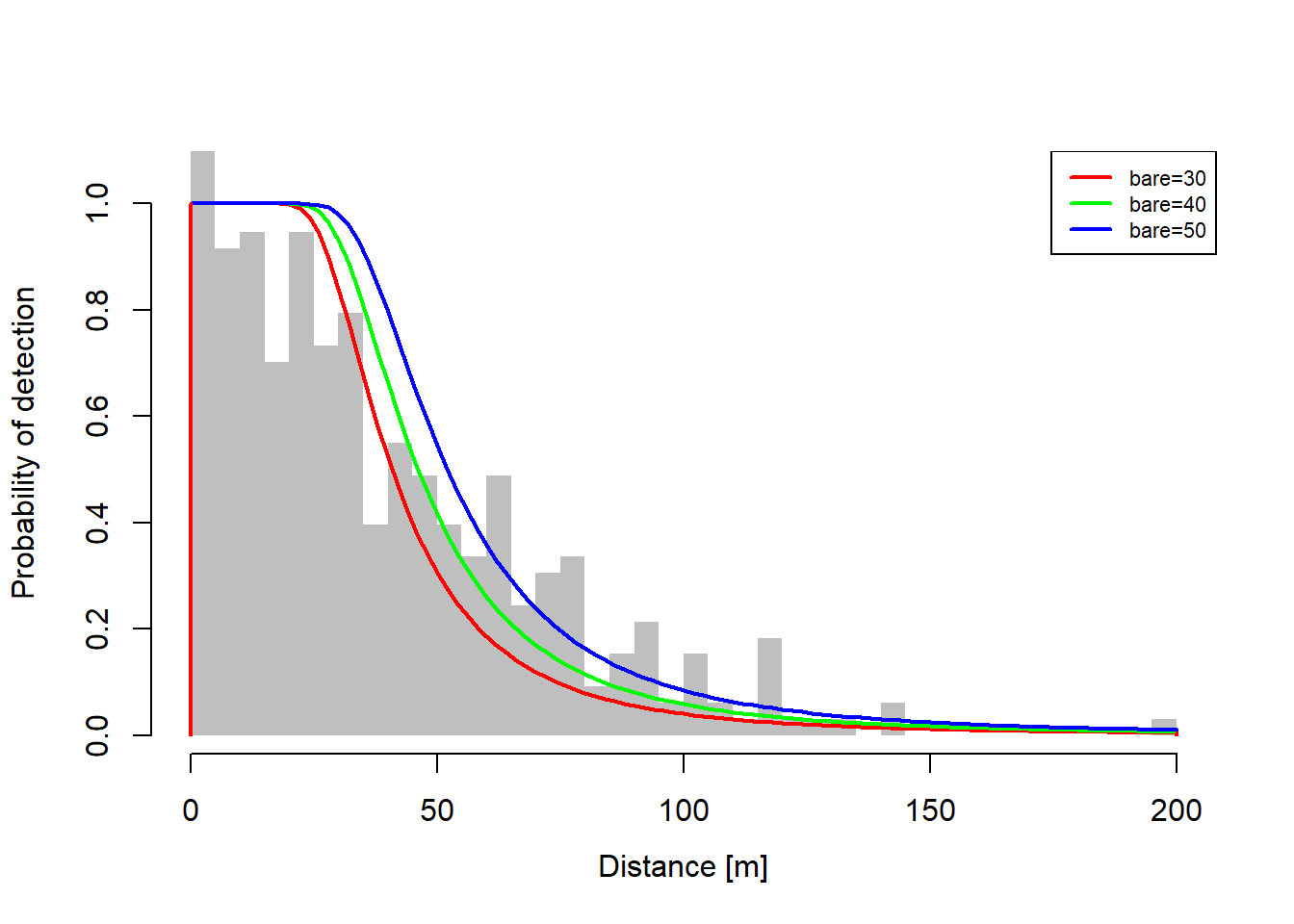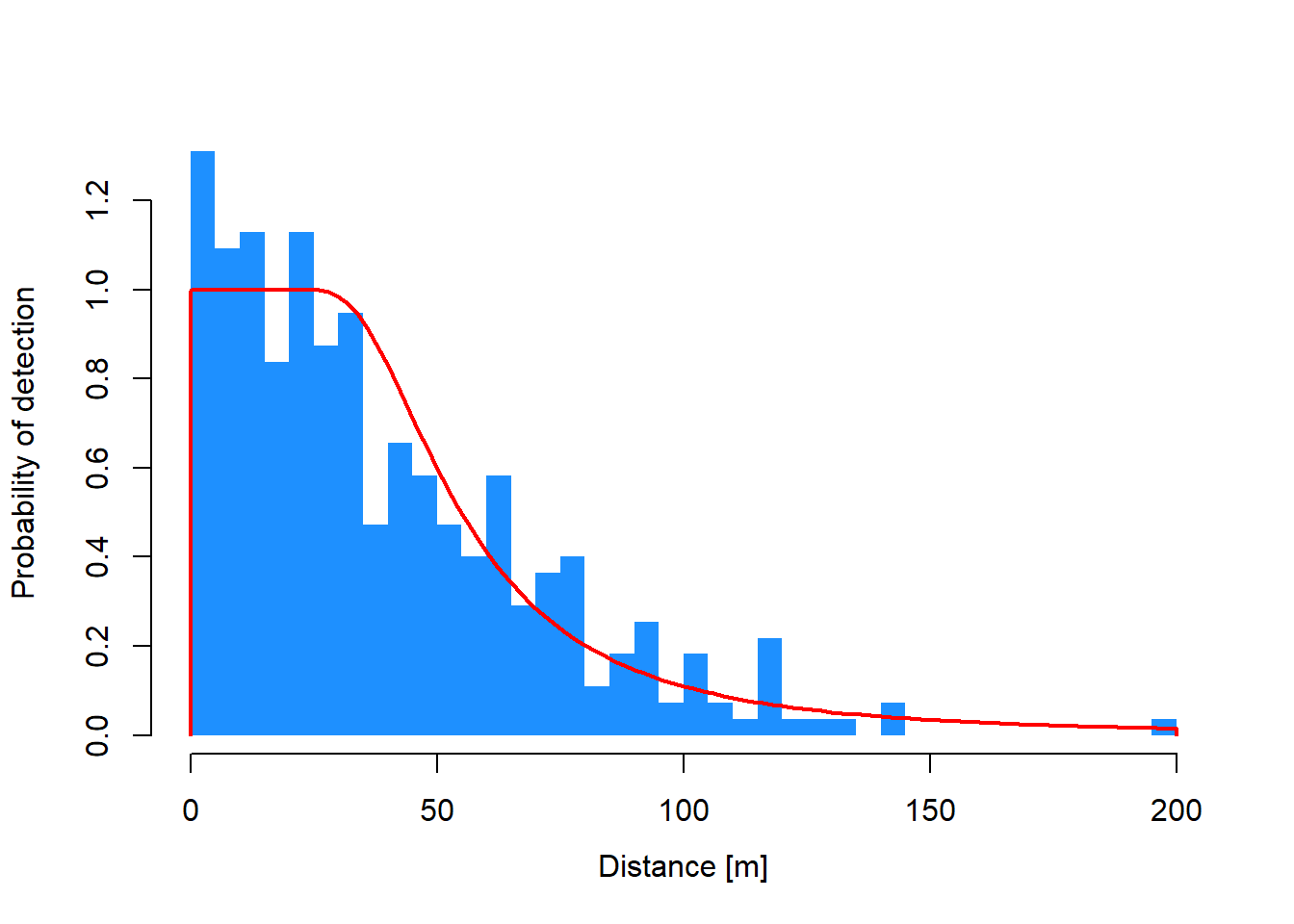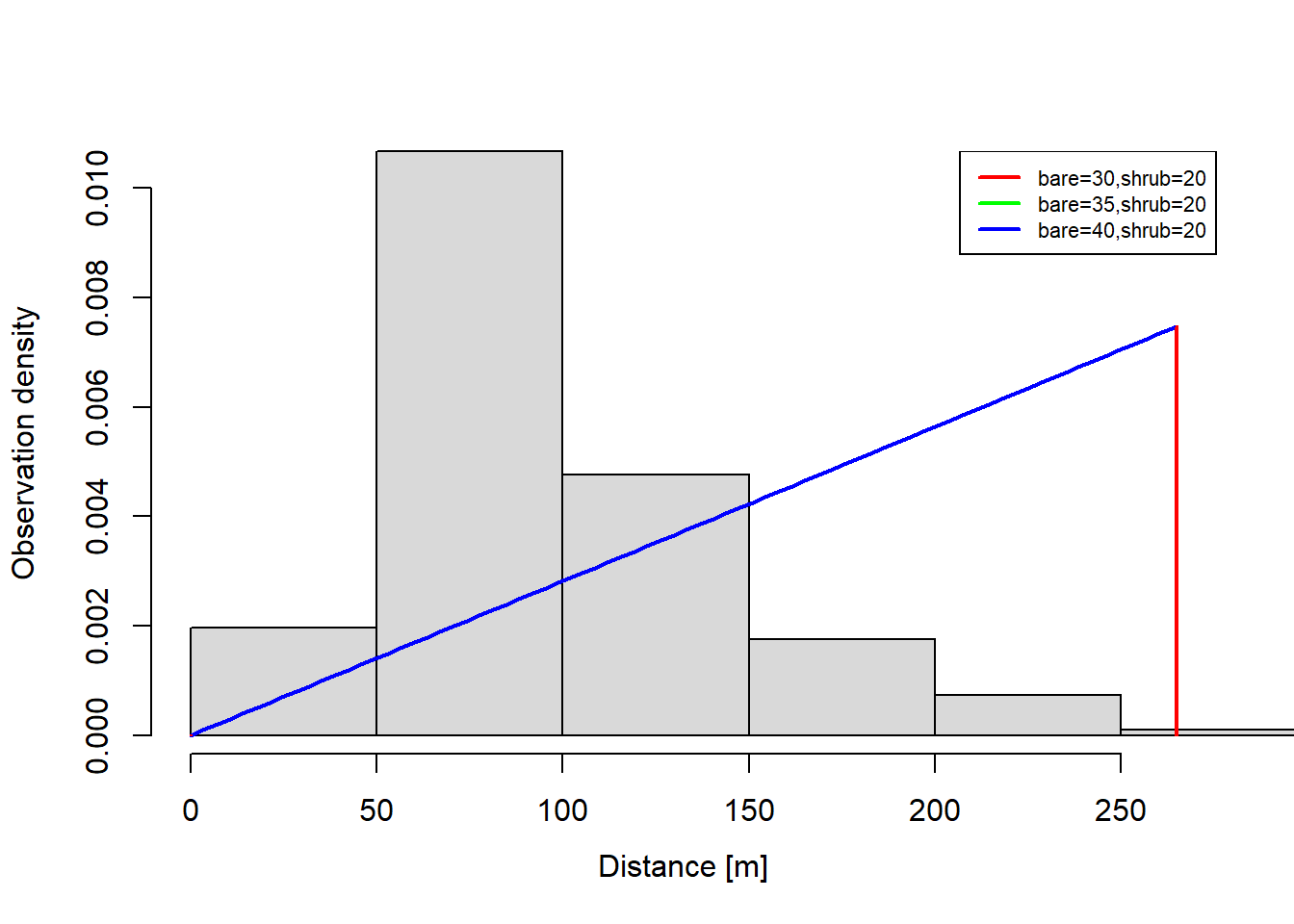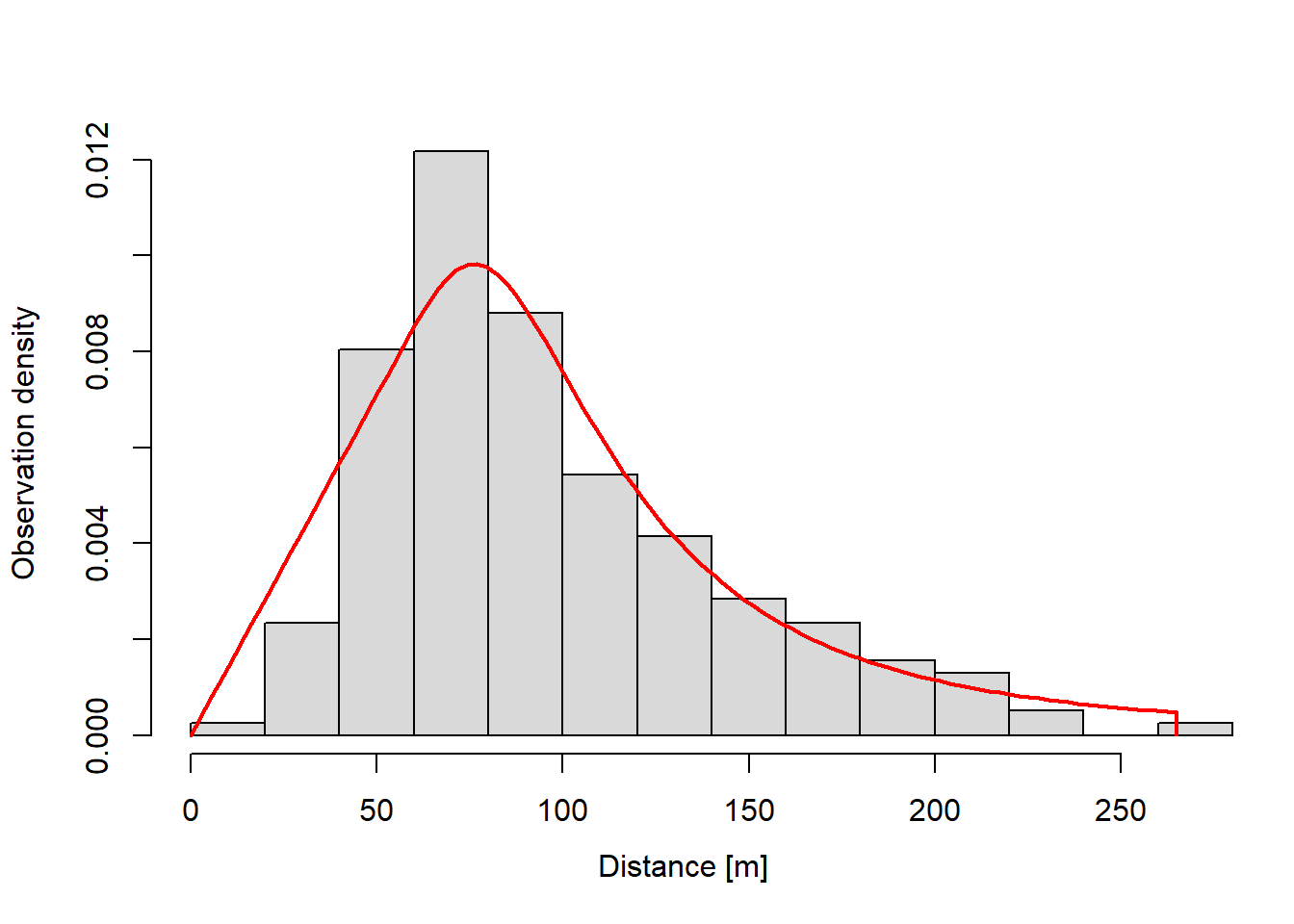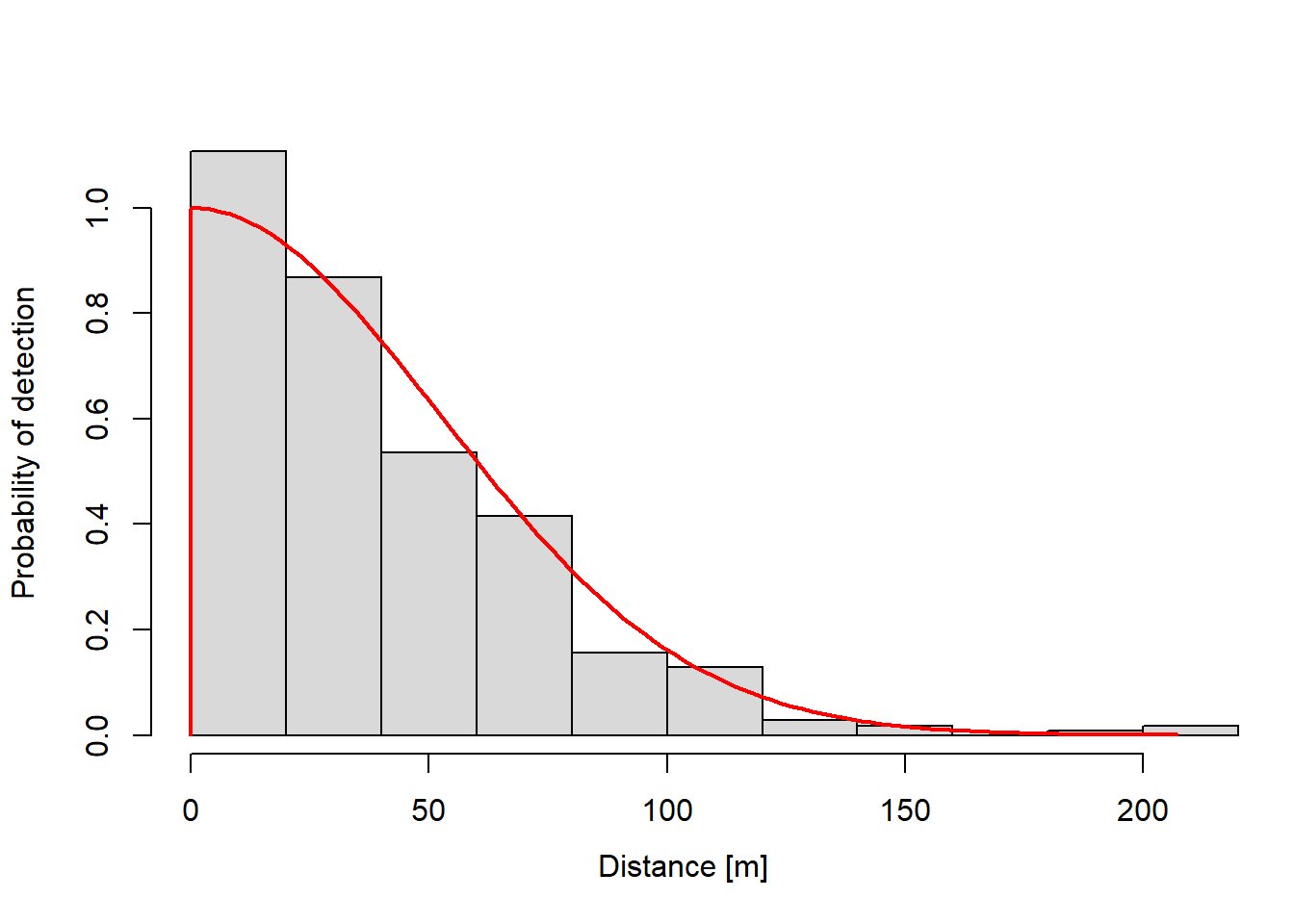Rdistance
An R package for density and abundance estimation in distance-sampling surveys
Distance-sampling is a form of ecological survey that estimates density and abundance of survey targets (e.g., animals) when detection probability declines with distance. Distance-sampling is popular in ecology, especially when survey targets are observed from aerial platforms (e.g., airplane or drone), surface vessels (e.g., boat or truck), or while walking transects. Distance-sampling includes line-transect studies that measure observation distances as the closest approach of the sample route (transect) to the target (i.e., perpendicular off-transect distance), and point-transect studies that measure observation distances from stationary observers to the target (i.e., radial distance).
Rdistance is an R package that performs density and abundance analysis using distance-sampling data. The routines included in Rdistance fit smooth (parametric) curves to histograms of observation distances and use those functions to compute effective sampling distances, density of targets in the surveyed area, and abundance of targets in a surrounding study area.
See the ‘Installation’ section of the README file on github.
